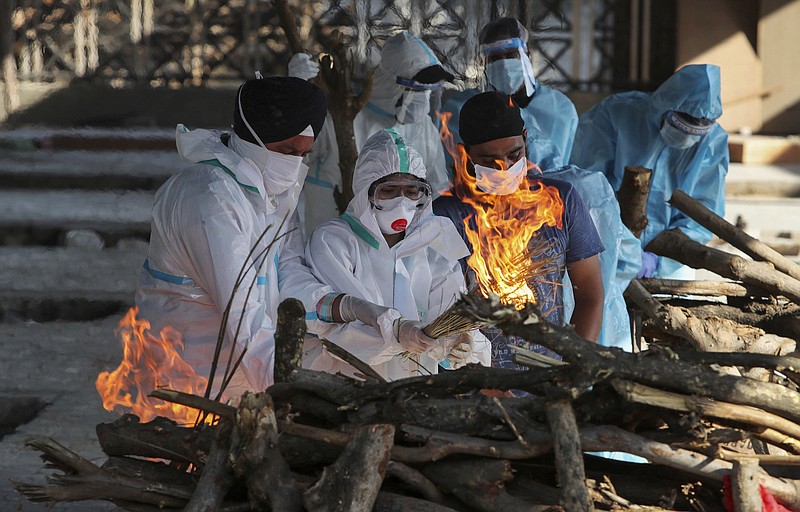NEW DELHI (AP) - Three days after his coronavirus symptoms appeared, Rajendra Karan struggled to breathe. Instead of waiting for an ambulance, his son drove him to a government hospital in Lucknow, the capital of India's largest state.
But the hospital wouldn't let him in without a registration slip from the district's chief medical officer. By the time the son got it, his father had died in the car, just outside the hospital doors.
"My father would have been alive today if the hospital had just admitted him instead of waiting for a piece of paper," Rohitas Karan said.
Stories of deaths tangled in bureaucracy and breakdowns have become dismally common in India, where deaths on Wednesday officially surged past 200,000. But the true death toll is believed to be far higher.
In India, mortality data was poor even before the pandemic, with most people dying at home and their deaths often going unregistered. The practice is particularly prevalent in rural areas, where the virus is now spreading fast.
This is partly why this nation of nearly 1.4 billion has recorded fewer deaths than Brazil and Mexico, which have smaller populations and fewer confirmed COVID-19 cases.
While determining exact numbers in a pandemic is difficult, experts said an overreliance on official data that didn't reflect the true extent of infections contributed to authorities being blindsided by a huge surge in recent weeks.
"People who could have been saved are dying now," said Gautam Menon, a professor of physics and biology at Ashoka University. Menon said there has been "serious undercounting" of deaths in many states.
India had thought the worst was over when cases ebbed in September. But infections began increasing in February, and on Wednesday, 362,757 new confirmed cases, a global record, pushed the country's total past 17.9 million, second only to the U.S.
Local media have reported discrepancies between official state tallies of the dead and actual numbers of bodies in crematoriums and burial grounds. Many crematoriums have spilled over into parking lots and other empty spaces as blazing funeral pyres light up the night sky.
India's daily deaths, which have nearly tripled in the past three weeks, also reflect a shattered and underfunded health care system. Hospitals are scrambling for more oxygen, beds, ventilators and ambulances, while families marshal their own resources in the absence of a functioning system.
Jitender Singh Shunty runs an ambulance service in New Delhi transporting COVID-19 victims' bodies to a temporary crematorium in a parking lot. He said those who die at home are generally unaccounted for in state tallies, while the number of bodies has increased from 10 to nearly 50 daily.
"When I go home, my clothes smell of burnt flesh. I have never seen so many dead bodies in my life," Shunty said.
Burial grounds are also filling up fast. The capital's largest Muslim graveyard is running out of space, said Mohammad Shameem, the head gravedigger, noting he was now burying nearly 40 bodies a day.
In southern Telangana state too, doctors and activists are contesting the official death counts.
On April 23, the state said 33 people had died of COVID-19. But 80-100 people died in just two hospitals in the state's capital, Hyderabad, the day before. It is unclear whether all were due to the virus, but experts said COVID-19 deaths across India aren't being listed as such.
Instead, many are attributed to underlying conditions despite national guidelines asking states to record all suspected COVID-19 deaths, even if the patient wasn't tested for the virus.
For instance, New Delhi officially recorded 4,000 COVID-19 deaths by Aug. 31, but this didn't include suspected deaths, according to data accessed by the Associated Press under a right-to-information request. Fatalities have since more than tripled to more than 14,500. Officials didn't respond to queries on whether suspected deaths are now being included.

